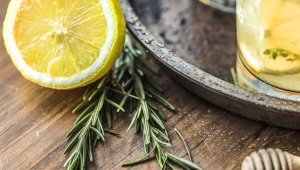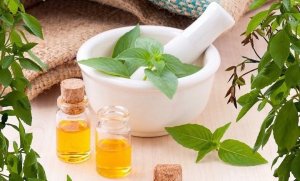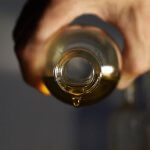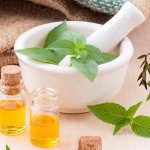In the world of perfumery, the allure of marketable fragrances lies in the artful composition of perfume accords. These harmonious blends of aromatic notes create unique olfactory signatures that captivate consumers. Discover how the skillful creation of perfume accords unlocks the secret to crafting irresistible and commercially successful fragrances.
It is no coincidence that two distinct art forms, namely perfumery and music, use the same terms to describe their compositions.
The word, accord, represents two elements that combine to make a third; in one case, it’s a musical composition, and in the other, a unique blended fragrance. The word also indicates that mixtures are comprised of the minimum of materials that are blended to create a single, greater synergistic effect.
Our perfumers are well aware that accords are the greatest secrets of perfume development despite the fact that they usually contain only one or two percent of a total formulation. They are the key to the transformation of a dull scent to a superior fragrance, and each accord represents a specific perfume family.
Some of the most common accords include: sweet, natural, warm and rich Balsam; woody, mossy Chypre; green, bright and clean Citrus; fresh, powdery and spicy Floral; melon, peach, apple, cherry, apricot and berry- tinged Fruit; verdant, fresh-cut grass Green; creamy and fruity Gourmand; sharp, cool, aromatic and diffusive Herbal; vanilla, musky, exotic, sweet and soft Oriental; warm and rich Spice and earthy, sensual, and aromatic Wood.

How Are Perfume Accords Developed?
Accords are the cornerstones of modern perfumery and our perfumers are masters at blending essences into a harmonious mélange that becomes altogether a different and singular fragrance. If done correctly, this new formulation will have individual components that are not detectable to even the most ardent of scent aficionados. This requires much patience and painstaking research and repeated modifications.
While this doesn’t even sound easy, its accomplishment is well worth the time. Each new accord can be used many times as a base from which new aromas can arise. Juggling accords to find just the right combination is vital to perfume formulation. More than 90% of any perfume’s formula can be identified in chemical terms thanks to the sophistication of modern analytical techniques.
However, when elements are compounded as they are in an accord, this becomes very difficult to ascertain because the foundations of the fragrance lie in traces of the components that comprise the accords within a particular scent. Sometimes referred to as a ‘sub-compound’ (or “key”), this label is really not a fair one for a true accord because the sub-compound itself may actually contain a true accord.

The key, no pun intended, to understanding the potency of accords lies in understanding the synergy that occurs during their creation. This is so much more than the total result of components added together. It is the creation of a whole (in this case, a fragrance) that is far greater than the sum of all its parts. We may often come across new materials that can serve as effective accords, but there is no mistaking that their development is far from serendipitous.
Formulation is a painstaking, systematic process of trial and error that requires patience, dedication, skill and time. An accord is a labor of love that is born when various notes are combined. A base accord, middle accord and top accord comprise a perfume. A perfumer always has an olfactory goal in mind, and the careful selection of essential oils always initiates the birth of a new fragrance.
For each type of accord, proportions of the essential oils are adjusted incrementally, using a test-strip process, which is repeated for each new ratio created. Researchers make comparisons and take notes to record these differences, and each new combination requires another round of test strips, ratios, comparisons and notes. Achieving desired results can and often does take hundreds of trials (and test strips).
Relevant Statistics Studies About the Perfume Industry
During the early years of colonial settlement, French explorers seeking outlets for the fur trade brought the first colognes and scented waters to North America. Since then, the desire for fragrances has become a multi-billion dollar industry.
Over the course of the last few years, the global perfume market has grown significantly. This is due to a number of factors that include an upsurge in consumer spending power and new and innovative product packaging and advertising.
According to a recent report issued by IMARC group entitled: Perfume Market: Global Industry Trends, Share, Size, Growth, Opportunity and Forecast 2018-2023, estimates that the perfume market was valued at US $37.4 billion in 2017. The report also suggested that market revenue will reach US $46 billion by the year, 2023 at a projected compound annual growth rate CAGR of 3.7% over the forecast period.
According to Statistic Brain, 4 out of every 5 women in the United States use perfume on a regular basis. North America is the largest global geographic segment for the fragrance industry, accounting for 34% of all revenues. Europe is the second-largest sector with 30% of industry sales. South America and the Middle East are burgeoning markets claiming 6% of industry sales respectively.
A Few Interesting Facts About Perfume
- Most Modern Perfumes Are Not Made With 100% Real Flowers: Partially due to mass production and the expanding perfumer’s palette, synthetic materials have been including in the use of developing finished aromas. This factor has additionally resulted in longer expiration dates, which has doubled the life expectancy of a bottle of perfume.
- Perfumes No Longer Contain Animal Ingredients: It’s important to note that fragrances no longer contain animal ingredients. Instead they are synthesized. These animal notes are synthetic and used in many diverse fragrances. Among them is civet, an ingredient that is, believe it or not, extracted from the feces or anal glands of a civet cat. They also include amber gris, whale emesis and beaver castors.
- Men’s Fragrances Aren’t Limited To Men: Surprisingly, about one-third of all men’s fragrances sold are worn by women. In reality, there is no inherently masculine or feminine scent. Its use is usually designated by how it is presented.
- Women Have a Stronger Sense of Smell Than Men: Studies have indicated that women have a more developed sense of smell than men, and are capable of identifying a greater number of different odors. This is due to the orbital prefrontal region of the brain, which is more developed in women than in men.
- Professional Perfumers Have to Identify At Least 250 Smells: To reach the pinnacle of the profession, perfumers must successfully identify at least 250 different scents as part of their induction into the world of the Noses (full-fledged perfumers).
- Leather Gloves Spread The Use Of Perfume Across Europe: During the 16th century, leather gloves were very popular. Glove makers perfumed gloves to disguise the odor of treated leather, which was prepared in ammonia.
- The World’s First Contemporary Perfume Was Ingested: Hungary Water, the world’s first contemporary perfume, was created for European royalty in 1370. It contained alcohol (brandy) and was touted as being at its most effective when both applied to the skin and swallowed!
- The Sense of Smell Works Like A Muscle: Simply put, use it or lose it, for the more humans utilize their sense of smell, the stronger and more discerning the nose becomes.
- Humans Can Smell Before Birth: Our sense of smell is the very first to develop and while still in the womb, unborn babies experience a fully formed and functional capacity to smell. It pervades early development, and from studies it has been noted that the smell of crayons is often cited as one of the earliest memories associated with childhood.
- Perfume Is Applied To Pulse Points Because They Radiate Heat: Pulse points are located where the blood vessels are the closest to the skin’s surface. These points help the applied scent exude from the skin to the air because they radiate heat.
Alpha Aromatics and Perfume Accords
We’re a leading creator, manufacturer and purveyor of superior custom perfumes and a pioneer within the fragrance industry, and have been family-run and operated for well over seven decades. Our mission is our mission is to design, create and supply the world’s finest, high quality scents one fragrance at a time, all the while meeting every environmental and quality standard set by RIFM, IFRA, Oregon Tilth, ISSA and the NPA.
Our expertise is unparalleled when it comes to translating any company’s vision into fragrance terms that will attract and engage consumers. Our fine compositions are the result of meticulous research and cutting edge technologies that are used for a myriad of purposes including but not limited to: superior quality perfumes; scent branding; personal care products; candles and diffusers and fragrances for home products.

Our perfumers, chemists and researchers all work within our 85,000-square-foot Technology Center located in suburban Pittsburgh. At the heart of our company is a constant state of innovation within the world of industrial science.
Our teams are always on top of industry trends and our laboratories are equipped with high technology state-of-the-art tools, which include: gas chromatography, mass spectrometry, headspace analysis, distillation, extraction and quality control technologies.
Who Is Chief Perfumer Roger Howell And Why Is He Important?
Roger Howell is the Chief Perfumer and Vice President of Alpha Aromatics.
He is one of the primary forces behind our incredible success whose scents are known far and wide across all the corners of the globe. He is a master of creation detail and quality, and his passion is to develop custom fragrances that always reflect the company’s unblemished reputation for excellence.
According to Alpha Aromatics VP of Business Development, Raymond Czapko: “Roger is an incredibly talented perfumer… His aptitude allows him to create compelling scents for clients in the fine fragrance, personal care, home, away from home, candles, organic, and odor neutralizer markets…He is also heavily involved in fragrance education and client communication. With a degree in chemistry, there are very few perfumers who have the knowledge he does and insists on working with clients every day.”
Ironically, Roger Howell began his extensive career as a perfumer by unknowingly walked into the wrong address in search of a chemistry-related job.
A fragrance specialist for almost four decades, Howell has worked with clients all across the United States in the capacity of chief perfumer, and his life and achievements have been profiled in top industry magazines. He has built perfume internal departments from scratch and handled all the sectors that make such a unit fully functional including: scent creation, fragrance manufacturing, employee training and regulatory procedures.
In his own words: “We drive the scent trends that guide product branding for a wide range of clients in the fine fragrance, personal care, household cleaning, and institutional and industrial industries… We know how important branding is for the continued growth of our clients’ product lines, and we pride ourselves on building scents that build great brands.”
Understanding accords not only lies at the heart of perfume creation, it also reflects the complexity, dedication and extreme skill required to capture an alluring scent that is like no other on earth.
The creation of a memorable fragrance is as much of a masterpiece as that of any musical opus with top, middle and base notes carefully and lovingly blended until the creator’s vision is finally realized. Whether it is a chord in music or an accord in fragrance, time is immeasurable and in its own way stands still until the job is done.
Perfume creation is a magical, elusive and erotic art form that is big business. We live in a fragrant age where scent is everywhere, influencing our memories and evoking our actions as consumers. A vestige of human history lives within the soul of every perfume essence, as it becomes a silent communicator with a language all its own that goes far beyond its conventional usage as an adornment and or accessory.
While some may not understand the link between perfume and power, it has always been there since the dawn of mankind.
In Conclusion
Fragrance tells a thousand tales without words, and its power and affect are in many ways primeval and not clearly understood. Perception is shadowy, but perfume serves as messenger, projecting that which the wearer wants others to perceive, which is highly empowering.
Our clients hail from many different industries, including perfumery brand owner and managers, brand coordinators, product developers, cosmetic scientists, skin-care development chemists, packaging technologists, senior chemists/soap makers, product development scientists, purchasing managers and directors and much more.
If you’re any of the above, don’t hesitate to call Alpha Aromatics today and find out what we can do for your company brand and vision. Have a more commanding presence and a brand message that speaks to your specific target audience.
Final thought on perfume: There are no women who do not like perfume. There are only women who have not yetfound their scent.~ Marilyn Monroe
This article was created with the insight, direction and approval of our chief perfumer, Roger Howell, our President and CEO, Arnold Zlotnik, and our Alpha management and staff. Learn more our fragrant mission, our credentialed management and quality control staff, as well as the passion and creative energy we put towards every fragrance we create.
What is a perfume accord?

Accords are the cornerstones of modern perfumery and our perfumers are masters at blending essences into a harmonious melange that becomes altogether a different and singular fragrance. If done correctly, this new formulation will have individual components that are not detectable to even the most ardent of scent aficionados. This requires much patience and painstaking research and repeated modifications.
What are some of the most common perfume accords?

Some of the most common accords include: sweet, natural, warm and rich Balsam; woody, mossy Chypre; green, bright and clean Citrus; fresh, powdery and spicy Floral; melon, peach, apple, cherry, apricot and berry- tinged Fruit; verdant, fresh-cut grass Green; creamy and fruity Gourmand; sharp, cool, aromatic and diffusive Herbal; vanilla, musky, exotic, sweet and soft Oriental; warm and rich Spice and earthy, sensual, and aromatic Wood.
 alpha aromatics®
alpha aromatics®